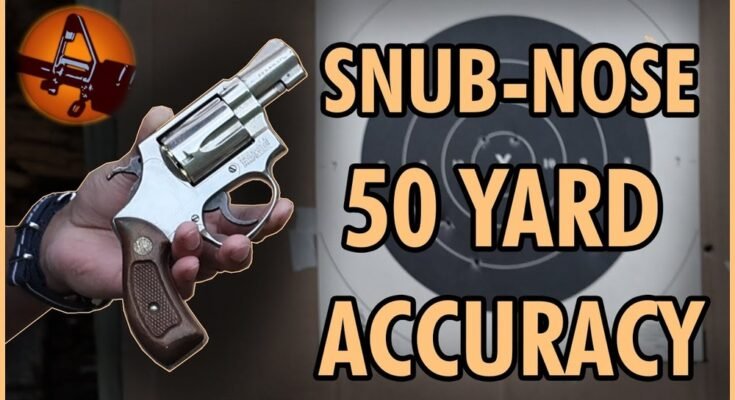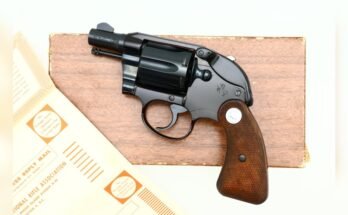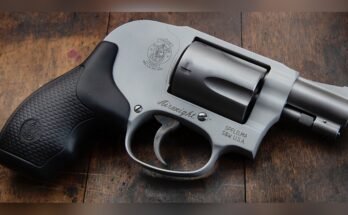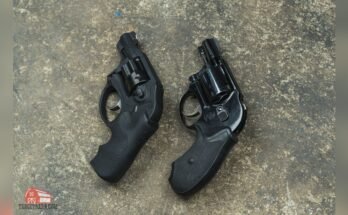When you pick up a snub-nose revolver, you might wonder: how accurate can it really be? You’ve probably heard mixed opinions—some say it’s perfect for quick defense, while others doubt its precision.
But what does the truth look like? Understanding your revolver’s accuracy can make all the difference, whether you’re practicing at the range or relying on it for protection. You’ll discover the facts about snub-nose revolver accuracy and learn what affects it most.
Keep reading to find out if this compact firearm meets your expectations.
Snub-nose Revolver Basics
Snub-nose revolvers are compact firearms designed for easy handling and quick use. Their small size makes them popular for self-defense and concealed carry. Understanding their basics helps to better grasp their accuracy and practical use.
Design And Features
Snub-nose revolvers have a short barrel, usually under 3 inches. This makes them lightweight and easy to carry. They often have a simple, sturdy frame for reliability. Their sights are small but enough for close-range aiming. The trigger pull can be heavier, which affects shooting speed. The grip is designed for comfort and control in tight spaces.
Common Calibers
Most snub-nose revolvers use calibers like .38 Special and .357 Magnum. These rounds balance power and recoil well. Some models also chamber .22 LR for low recoil practice. The choice of caliber affects stopping power and shooting comfort. Smaller calibers have less recoil but also less impact on the target.
Typical Uses
These revolvers are mainly for self-defense and concealed carry. Their size fits well in pockets or small holsters. Law enforcement sometimes use them as backup guns. They are less common for hunting or sport shooting. Their design suits short-distance shooting and quick response situations.

Factors Influencing Accuracy
Accuracy of a snub-nose revolver depends on several key factors. These affect how well the shooter can hit a target. Understanding these factors helps improve shooting skills. It also guides in choosing the right revolver and ammo.
Barrel Length Impact
Barrel length directly affects accuracy. Short barrels, like on snub-nose revolvers, reduce sight radius. This makes aiming harder at longer distances. Longer barrels allow bullets to gain more velocity. This usually means better accuracy and less recoil. Still, snub-nose revolvers are easier to carry and quicker to draw.
Sight Types
Sights play a big role in aiming precision. Many snub-nose revolvers have fixed sights. These are simple but less adjustable. Adjustable sights allow fine-tuning for better accuracy. Some shooters prefer adding fiber optic or night sights. These improve visibility in low light. Clear sight picture helps the shooter focus on the target.
Ammunition Choices
Ammunition quality and type influence shot placement. Heavier bullets may reduce recoil but drop faster. Lighter bullets shoot flatter but can have more recoil. Some ammo types produce more noise and flash. This can distract the shooter and reduce accuracy. Testing different ammo types helps find the best fit for each revolver.
Comparing Accuracy To Other Firearms
Comparing the accuracy of a snub-nose revolver to other firearms helps understand its strengths and limits. Accuracy depends on many factors, including barrel length, sight size, and grip comfort. Shorter barrels on snub-nose revolvers usually reduce accuracy at longer distances. Still, they offer quick handling and easy carry. Let’s compare their accuracy to full-size revolvers and semi-automatic pistols.
Versus Full-size Revolvers
Full-size revolvers have longer barrels than snub-nose models. Longer barrels improve bullet speed and sight radius. This helps shooters aim more precisely. Full-size revolvers usually have larger, easier-to-see sights. These features boost accuracy, especially at medium and long ranges.
Snub-nose revolvers have shorter barrels, making sights closer together. This limits precise aiming over distance. The shorter barrel also lowers bullet velocity, affecting trajectory and impact. However, snub-nose guns are easier to handle up close. They work well in tight spaces or quick shots.
Versus Semi-automatic Pistols
Semi-automatic pistols often have longer barrels than snub-nose revolvers. This increases bullet speed and sight radius, enhancing accuracy. Many pistols feature adjustable sights for better target alignment. Their slimmer profiles and lighter triggers allow smooth, fast shooting.
Snub-nose revolvers have heavier trigger pulls. This can cause slight movement when firing, reducing accuracy. Semi-automatics usually hold more rounds, so shooters feel less pressure to be perfect. Snub-nose revolvers shine in simplicity and reliability but trade off some precision.
Shooting Techniques For Better Accuracy
Improving accuracy with a snub-nose revolver takes practice and the right techniques. Small mistakes can cause big misses. Focus on grip, stance, trigger control, and follow-through to shoot better. These basics help manage recoil and aim steadily.
Grip And Stance
Hold the revolver firmly but not too tight. A strong grip controls recoil and keeps the gun steady. Use both hands if possible. Stand with feet shoulder-width apart. Lean slightly forward. This stance helps balance and reduces sway.
Trigger Control
Press the trigger slowly and steadily. Avoid jerking or slapping it. A smooth pull prevents the gun from moving off target. Keep your finger relaxed until ready to shoot. This control improves shot placement.
Follow-through
Keep aiming even after the shot fires. Maintain your grip and sight alignment. Follow-through helps prevent flinching. It trains your body to stay steady for the next shot. This habit builds consistent accuracy.
Real-world Accuracy Experiences
Real-world accuracy of snub-nose revolvers varies based on many factors. These include shooter skill, distance, and the gun’s design. Understanding how these guns perform outside the range offers useful insights. This section explores real experiences from law enforcement and civilian users.
Law Enforcement Insights
Snub-nose revolvers have been standard backup guns for many officers. They are valued for ease of carry and quick draw. Officers report good accuracy at close distances, typically under 7 yards. Most hits land where aimed in high-stress situations.
Training plays a key role in accuracy. Officers practice regularly to improve their skills. The short barrel limits sight radius, affecting long-range precision. Still, within typical engagement distances, these revolvers perform reliably.
Civilian Usage Reports
Civilians often choose snub-nose revolvers for self-defense at home or concealed carry. Many find them easy to handle and quick to shoot. Reports show effective accuracy within 5 to 10 yards. Beyond this, hitting small targets becomes harder.
Recoil can affect follow-up shots for some users. Regular practice helps overcome this challenge. Overall, civilians appreciate the balance of power and control these guns provide. Their real-world use confirms their suitability for close-range defense.
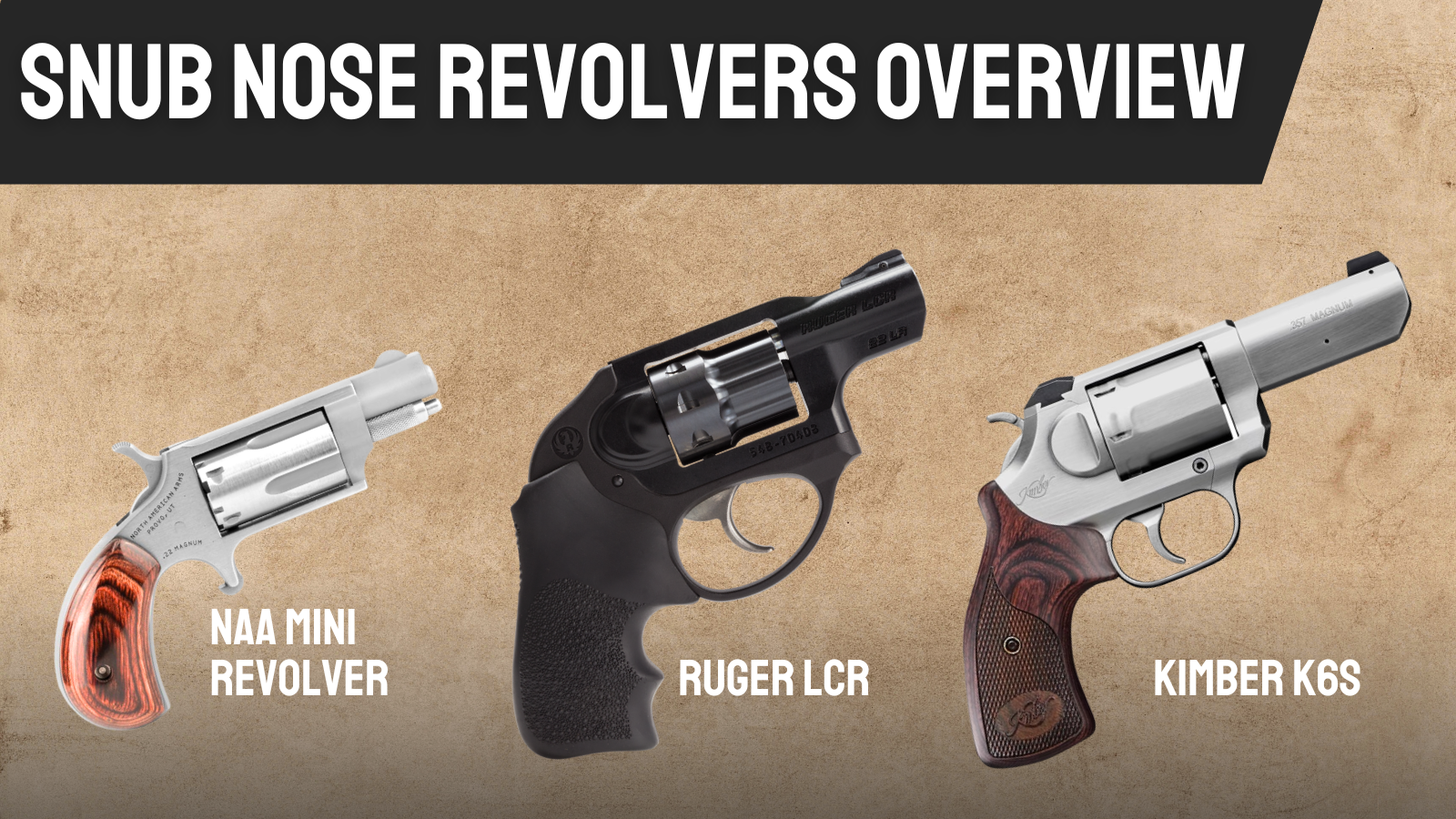
Improving Snub-nose Accuracy
Improving the accuracy of a snub-nose revolver takes focus and the right steps. These small guns have short barrels, which can make aiming harder. Simple upgrades and good habits can help you shoot better.
Small changes to your revolver and your skills can make a big difference. Below are some ways to improve your shooting accuracy with a snub-nose revolver.
Upgrading Sights
Factory sights on snub-nose revolvers are often basic. Upgrading to better sights helps you see the target clearly. Look for bright, high-contrast sights. Fiber optic or night sights work well in low light. Better sights make aiming faster and more precise.
Customizing Triggers
Trigger pull affects how steady you hold the gun. A heavy trigger can pull your aim off target. Customizing the trigger to a lighter, smoother pull helps control shots. Many gunsmiths offer trigger jobs for snub-nose revolvers. A good trigger lets you squeeze the shot without jerking the gun.
Practice And Training
Regular practice builds muscle memory and confidence. Dry firing helps with trigger control without ammo. Live fire practice improves aiming under real conditions. Focus on slow, steady shots to improve accuracy. Training with an instructor can correct bad habits fast.

Frequently Asked Questions
How Accurate Is A Snub-nose Revolver At Close Range?
Snub-nose revolvers are generally accurate at close range, typically within 7 yards. Their short barrel limits long-distance precision but makes them reliable for self-defense situations.
Does Barrel Length Affect A Snub-nose Revolver’s Accuracy?
Yes, shorter barrels reduce accuracy due to less bullet velocity and sight radius. Snub-nose revolvers trade some accuracy for compactness and ease of carry.
Can Skilled Shooters Improve Snub-nose Revolver Accuracy?
Absolutely. Proper grip, stance, and trigger control greatly enhance accuracy. Practice is key to overcoming the inherent limitations of short barrels.
Are Snub-nose Revolvers Suitable For Target Shooting?
They are less ideal for target shooting due to short barrels and limited sight radius. However, experienced shooters can still achieve reasonable accuracy with practice.
Conclusion
Snub-nose revolvers offer decent accuracy at close range. Their short barrel limits long-distance precision. Practice helps shooters improve their aim with these guns. They work well for self-defense and quick shots. Expect some recoil, which can affect accuracy for beginners.
Choosing quality ammunition also makes a difference in performance. Overall, they balance ease of use with reasonable accuracy. Perfect for those needing a compact, reliable firearm. Keep practicing to get the best results every time.
